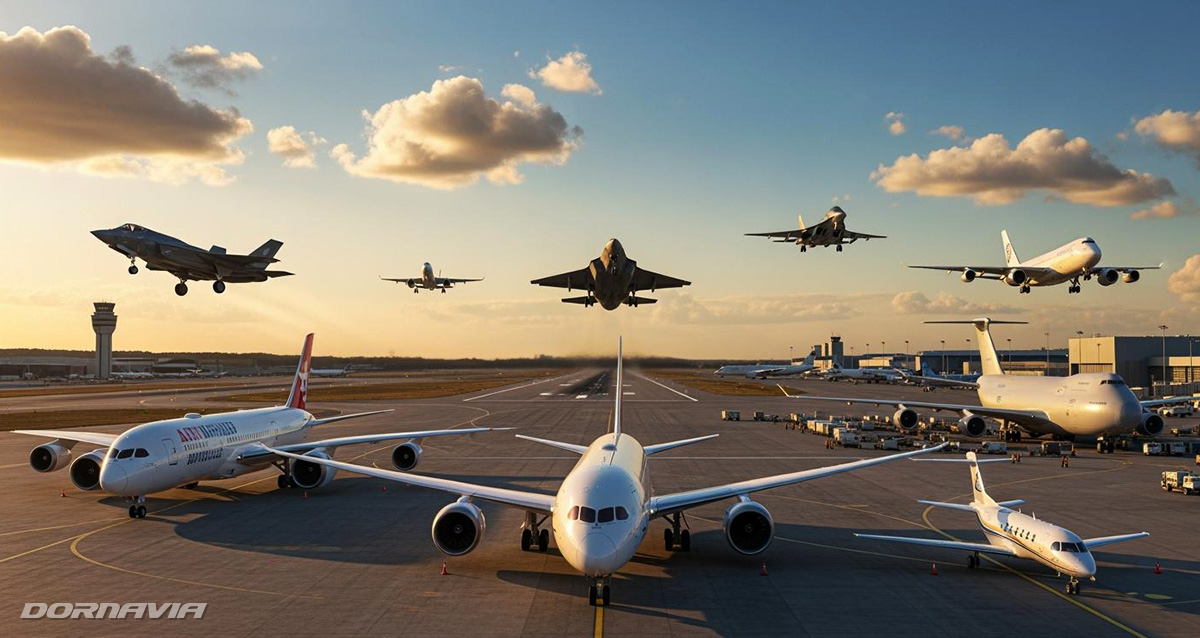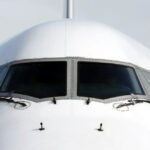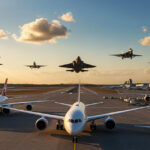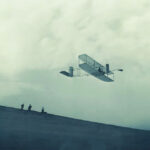The aviation industry is a fascinating world of engineering marvels, each designed for specific purposes, from carrying passengers across continents to executing critical military missions. Whether you’re an aviation enthusiast or just curious about the skies, understanding the different types of airplanes and their applications can deepen your appreciation for this dynamic field. In this article, we’ll explore the main categories of airplanes—passenger, military, cargo, and light aircraft—breaking down their designs, purposes, and unique features in a way that’s easy to understand, even for beginners. Let’s dive into the skies and discover the incredible variety of aircraft soaring above us!
What Are the Main Types of Airplanes?
Airplanes come in various shapes, sizes, and designs, each tailored to meet specific needs. The four primary categories of airplanes are:
- Passenger Airplanes: Built to transport people comfortably and efficiently.
- Military Airplanes: Designed for defense, combat, and strategic operations.
- Cargo Airplanes: Engineered to carry goods and heavy freight across the globe.
- Light Aircraft: Small, versatile planes used for personal, recreational, or training purposes.
Each type serves a unique role in aviation, and their designs reflect the demands of their specific functions. Let’s explore each category in detail.
Passenger Airplanes: Connecting the World
Passenger airplanes, also known as commercial airliners, are the backbone of global travel. These aircraft are designed to carry passengers safely and comfortably, often over long distances. From short regional flights to transcontinental journeys, passenger planes vary widely in size and capacity.
Types of Passenger Airplanes
- Narrow-Body Airplanes: These are single-aisle planes, typically used for short to medium-haul flights. Examples include the Boeing 737 and Airbus A320. They can carry between 100 to 200 passengers and are ideal for domestic or regional routes.
- Wide-Body Airplanes: These larger, twin-aisle planes are built for long-haul international flights. Models like the Boeing 747, Airbus A380, and Boeing 787 Dreamliner can carry 200 to over 800 passengers. They offer more space, amenities, and comfort for extended journeys.
- Regional Jets: Smaller than narrow-body planes, regional jets like the Embraer E175 or Bombardier CRJ series carry 50 to 100 passengers. They’re perfect for connecting smaller cities to major hubs.
Features and Applications
Passenger airplanes prioritize safety, fuel efficiency, and passenger comfort. Modern airliners are equipped with advanced technology, such as in-flight entertainment systems, Wi-Fi, and ergonomic seating. They also feature sophisticated navigation and safety systems to ensure smooth and secure flights.
- Applications: Commercial airliners transport millions of passengers daily for business, tourism, and family visits. They’re essential for global connectivity, making international travel accessible and efficient.
- Fun Fact: The Airbus A380, one of the largest passenger planes, can carry up to 853 passengers in a high-density configuration, making it a favorite for busy routes like Dubai to London.
For aviation enthusiasts, passenger planes represent the pinnacle of engineering for mass transportation, blending aerodynamics with comfort.
Related post: A History of Aviation: A Journey from Myth to Modern Skies
Military Airplanes: Power in the Skies
Military airplanes are built for defense, combat, and strategic missions. These high-performance aircraft are designed to operate in challenging conditions, from dogfights to reconnaissance missions. They’re equipped with cutting-edge technology and weaponry, making them some of the most advanced machines in the sky.
Types of Military Airplanes
Fighter Jets: These agile, high-speed aircraft, like the F-22 Raptor or Sukhoi Su-57, are designed for air-to-air combat and air-to-ground attacks. They’re known for their maneuverability and advanced radar systems.
- Bombers: Built for delivering heavy payloads, bombers like the B-2 Spirit or B-52 Stratofortress can carry bombs or missiles over long distances to strike strategic targets.
- Reconnaissance Aircraft: Planes like the U-2 Spy Plane or SR-71 Blackbird are used for intelligence gathering, equipped with cameras and sensors to monitor enemy activity.
- Transport and Support Aircraft: Military transport planes, such as the C-130 Hercules, carry troops, equipment, and supplies to support operations. They can land on rough runways, making them versatile for remote missions.
Features and Applications
Military airplanes are designed for durability, speed, and precision. They often feature stealth technology, advanced avionics, and weaponry like missiles and machine guns. Their applications include:
- Combat Operations: Engaging enemy aircraft or ground targets.
- Surveillance: Gathering intelligence through aerial photography or electronic monitoring.
- Logistics: Transporting troops and supplies to conflict zones or disaster areas.
- Training: Preparing pilots for combat scenarios using specialized trainer aircraft.
Military aviation is a thrilling field for enthusiasts, showcasing the cutting edge of technology and the skill of pilots who operate these powerful machines.
Cargo Airplanes: The Movers of Global Trade
Cargo airplanes are the workhorses of the aviation industry, designed to transport goods, equipment, and supplies across the world. From delivering online shopping packages to transporting humanitarian aid, these planes are vital to global commerce and logistics.
Types of Cargo Airplanes
Freighter Airplanes: These are dedicated cargo planes, like the Boeing 747 Freighter or Antonov An-124, built to carry large volumes of goods. They have wide cargo holds and reinforced floors to handle heavy loads.
- Converted Passenger Planes: Some older passenger planes, like the Boeing 737 or Airbus A330, are converted into freighters by removing seats and adding cargo doors.
- Combi Aircraft: These hybrid planes, like the Boeing 737 Combi, carry both passengers and cargo, often used in remote areas with limited infrastructure.
Features and Applications
Cargo planes are designed for efficiency and capacity. They feature large cargo doors, reinforced structures, and sometimes even nose-loading capabilities for oversized items. Key applications include:
- Global Shipping: Transporting everything from electronics to perishable goods across continents.
- Humanitarian Aid: Delivering food, medical supplies, and equipment to disaster-stricken areas.
- Industrial Transport: Carrying heavy machinery or vehicles for industries like construction or mining.
For aviation enthusiasts, cargo planes are a testament to the industry’s ability to move massive loads efficiently, with giants like the Antonov An-225 (before its destruction) capable of carrying up to 250 tons.
Light Aircraft: Freedom in the Skies
Light aircraft, also known as general aviation aircraft, are small planes designed for personal, recreational, or training purposes. These versatile planes are popular among aviation enthusiasts, hobbyists, and small businesses due to their affordability and flexibility.
Types of Light Aircraft
- Single-Engine Piston Aircraft: Planes like the Cessna 172 or Piper Cherokee are powered by a single piston engine. They’re widely used for flight training, personal travel, and aerial sightseeing.
- Multi-Engine Piston Aircraft: Aircraft like the Beechcraft Baron have two engines, offering more power and safety for longer trips or small charter services.
- Ultralights and Microlights: These tiny, lightweight planes, such as the Quicksilver MX, are used for recreational flying and can often take off from short runways or fields.
- Gliders: Non-powered aircraft that rely on air currents to stay aloft, used for sport and training.
Features and Applications
Light aircraft are simple, affordable, and easy to maintain compared to larger planes. They typically seat 2 to 6 people and are ideal for short distances. Their applications include:
- Flight Training: Most pilots begin their training on light aircraft like the Cessna 172 due to their ease of handling.
- Recreational Flying: Enthusiasts use light aircraft for scenic flights or aerobatic competitions.
- Utility Missions: Light aircraft are used for tasks like aerial photography, crop dusting, or surveying remote areas.
For aviation enthusiasts, light aircraft offer a hands-on way to experience the joy of flying, making them a gateway to the skies.
How Are Airplanes Designed for Their Roles?
Each type of airplane is engineered with specific features to suit its purpose:
- Aerodynamics: Passenger planes prioritize fuel efficiency and smooth rides, while fighter jets focus on speed and agility.
- Materials: Military planes use lightweight, durable materials like titanium for strength, while cargo planes use reinforced structures to handle heavy loads.
- Engines: Passenger and cargo planes often use turbofan engines for efficiency, while light aircraft rely on piston engines, and fighter jets use powerful jet engines for speed.
- Avionics: Military planes have advanced radar and targeting systems, while passenger planes focus on navigation and communication for safety.
Understanding these design differences can help enthusiasts appreciate the engineering behind each aircraft type.
Why Does This Matter for Aviation Enthusiasts?
For those passionate about aviation, knowing the types of airplanes and their roles opens up a deeper understanding of the industry. Whether you’re fascinated by the sleek design of a fighter jet, the massive capacity of a cargo plane, or the simplicity of a light aircraft, each category offers something unique. Here’s why this knowledge is exciting:
- Appreciating Technology: Learning about the engineering behind each plane type showcases the incredible advancements in aviation.
- Exploring Careers: Understanding aircraft types can inspire careers in piloting, engineering, or aviation management.
- Enhancing Hobby: For enthusiasts, spotting different aircraft at airports or airshows becomes more rewarding when you know their purpose and design.
Conclusion: The Diverse World of Airplanes
The aviation industry is a remarkable blend of innovation, engineering, and purpose. From passenger airliners connecting people across the globe to military jets defending nations, cargo planes powering global trade, and light aircraft offering personal freedom, each type of airplane plays a vital role. For aviation enthusiasts, exploring these categories is a journey into the heart of flight, revealing the incredible diversity of machines that dominate the skies.
Whether you’re a beginner or a seasoned aviation fan, understanding the types of airplanes and their applications can fuel your passion for this dynamic field. So next time you see a plane overhead, take a moment to think about its purpose—it might just be carrying passengers, cargo, or even defending the skies!





